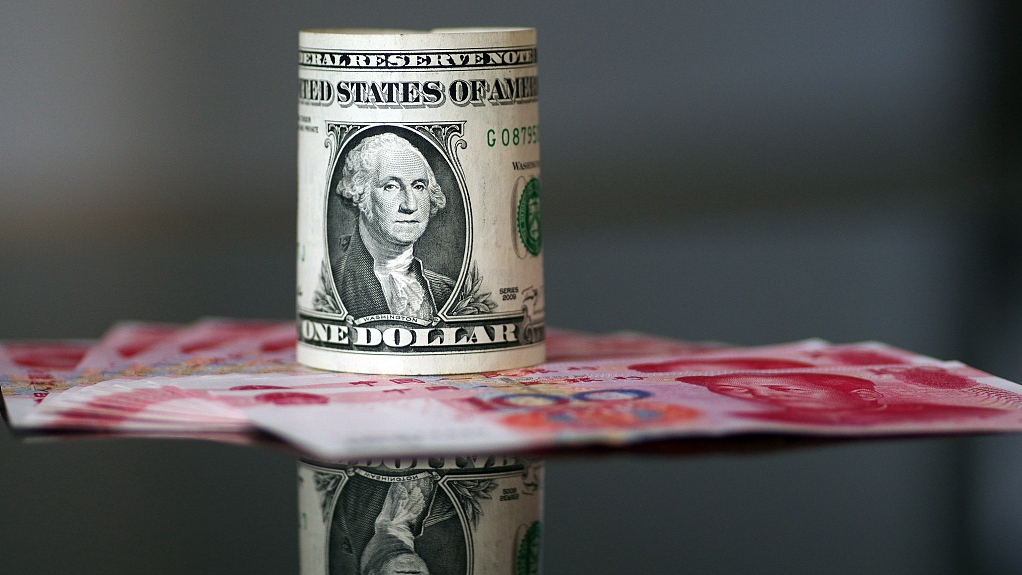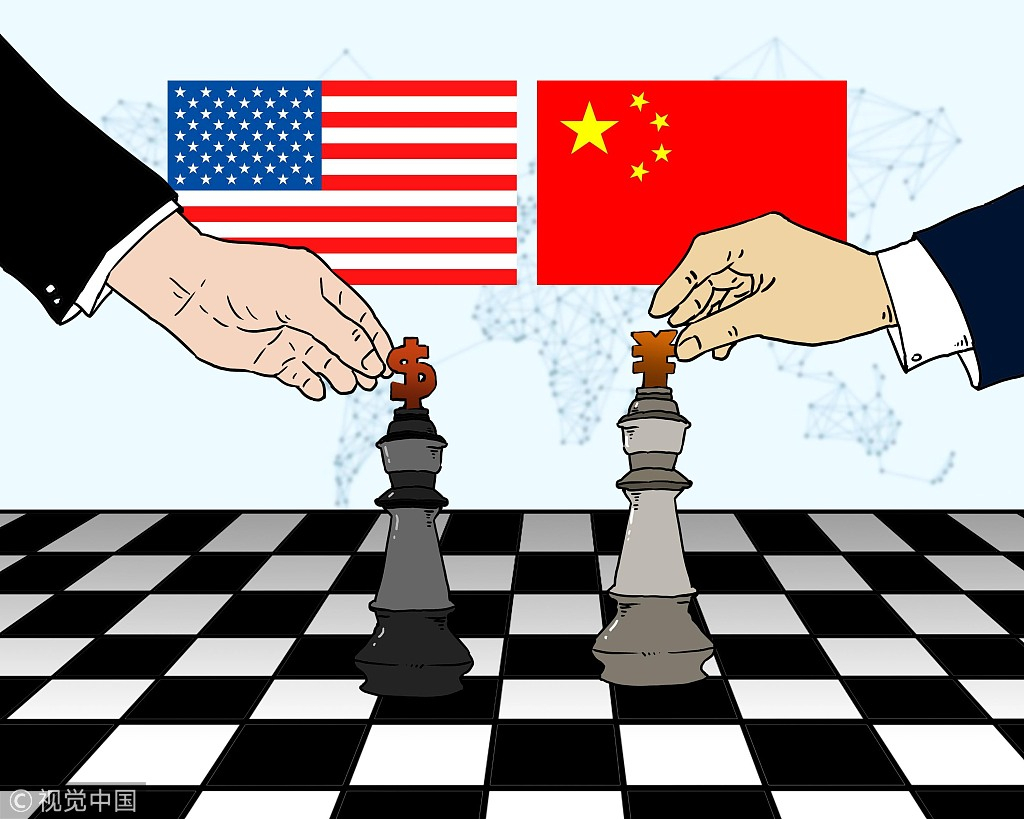
Opinion
12:09, 11-Feb-2019
Two noteworthy things about this week's China-U.S. trade talks

Editor's note: This article is an edited translation of two Chinese stories published on the WeChat accounts of Bullpiano and Taoranbiji on February 10, 2019. The article reflects the authors' opinions, and not necessarily the views of CGTN.
Chinese Vice Premier Liu He will hold a new round of high-level China-U.S. economic and trade talks with U.S. Trade Representative (USTR) Robert Lighthizer and Treasury Secretary Steven Mnuchin in Beijing from February 14 to 15. Building on the recent negotiations in Washington, the two sides will have further discussions on issues of common concern. The U.S. delegation will arrive in Beijing on February 11.
There are two noteworthy details about this week's talks.
Timing
According to the information released by the American side, Lighthizer and Mnuchin will attend the talks from February 14 to 15; before that, Deputy USTR Jeffrey Gerrish will lead the U.S. side in a vice-ministerial meeting with the Chinese side on February 11. The main consultation will be held on February 14 and 15, but on February 11, the first working day after the Chinese New Year holiday, the U.S. delegation will arrive in China, which demonstrates that the U.S. attaches great importance to this consultation.
Lineup of the U.S. delegation
The U.S. delegation includes: 1) U.S. Trade Representative Robert Lighthizer and Treasury Secretary Steven Mnuchin, who will lead the delegation, and Deputy USTR Jeffrey Gerrish, who will lead the U.S. side in the vice-ministerial meeting;
2) Chief agricultural negotiator of the Office of the USTR Gregg Doud, Under Secretary of the Treasury for International Affairs David Malpass, Under Secretary of Agriculture for Trade and Foreign Agricultural Affairs Ted McKinney, Under Secretary of Commerce for International Trade Gilbert Kaplan, deputy director of the National Economic Council of the White House Clete Willems, and Assistant Secretary for Fossil Energy Steven Winberg; and
3) other high-ranking officials from the White House, the Office of the USTR, Department of State, Department of Treasury, Department of Agriculture, Department of Commerce and Department of Energy.

VCG Photo.
VCG Photo.
In short, it is a very high-level delegation. Many of its members met the Chinese officials on January 30 and 31, and some had even sat with the Chinese side at the table in the China-U.S. vice-ministerial consultation from January 7 to 9. This indicates that in a matter of one month's time, some Chinese and U.S. officials have met each other three times. Such a high frequency of contact signals that the two sides are entering a crucial stage of economic and trade negotiations and are sparing no effort to achieve positive outcomes.
A couple of inferences can be made from the abovementioned details.
The China-U.S. economic and trade consultation is progressing in a positive direction.
On February 7, President Donald Trump told the press that he would not meet President Xi Jinping before the March trade deal deadline. Director of the U.S. National Economic Council Larry Kudlow also said that the presidents of the two countries might meet later, but “We've got a pretty sizeable distance to go there.”

U.S. Trade Representative Robert Lighthizer (left) leaves a hotel in Beijing, May 4, 2018. /VCG Photo.
U.S. Trade Representative Robert Lighthizer (left) leaves a hotel in Beijing, May 4, 2018. /VCG Photo.
In recent negotiations, although the U.S. side has kept saying “no” to this and that, their actions speak louder and on a more positive note. An important sign is that since the presidential meeting on December 1, 2018, we have seen increases in both the frequency of contact and the size and level of the U.S. delegation.
This week's talks are taking place just two weeks after the previous round concluded on January 31 in Washington. The U.S. delegation still led by Deputy USTR Jeffrey Gerrish but joined by Deputy National Economic Council Director of the White House Clete Willems, consists of nearly 60 members, more than twice the size on January 7 (with 24 members).
The ultimate goal behind the so-called “trade deal deadline” is to end the trade war and reach a deal that works out for both sides.
After the consultation on January 31, President Trump made a statement when he was meeting with Chinese Vice Premier Liu He: “We have made tremendous progress. Now we're going to have a great trade deal with China if it all works out. And we look forward to it. It's going to be great for both countries — not just us, not just them. This is going to be great for both countries…. Ambassador Lighthizer and Secretary Mnuchin will be going in early February, with the group, to China to continue negotiations…. I think we're working on seeing where everybody is, and then I and President Xi will meet to discuss some final issues. I have a feeling it will be agreed to pretty quickly by both countries. Both countries would like to see a positive result.”
The real concern is whether the two sides can reach an agreement by March 1.

VCG Photo.
VCG Photo.
The China-U.S. consultation is a bilateral negotiation. The attitude of China matters, as does the U.S. attitude. Only by considering the attitude of both sides can we have a clear understanding of where they are. China's attitude remains the same: “China doesn't want a trade war, but we're not afraid to fight a trade war,” “China firmly safeguards its national dignity and core interests,” and “China will run its own affairs well, open its door wider, and deliver high-quality development.”
The upcoming round of trade talks will definitely be a key battle of wits between China and the U.S. In the last round in Washington, the two sides made important progress; they will build on that and have further discussions on issues of common concern. With both sides under pressure, they are actively seeking a breakthrough.
(If you want to contribute and have specific expertise, please contact us at opinions@cgtn.com.)

SITEMAP
Copyright © 2018 CGTN. Beijing ICP prepared NO.16065310-3
Copyright © 2018 CGTN. Beijing ICP prepared NO.16065310-3